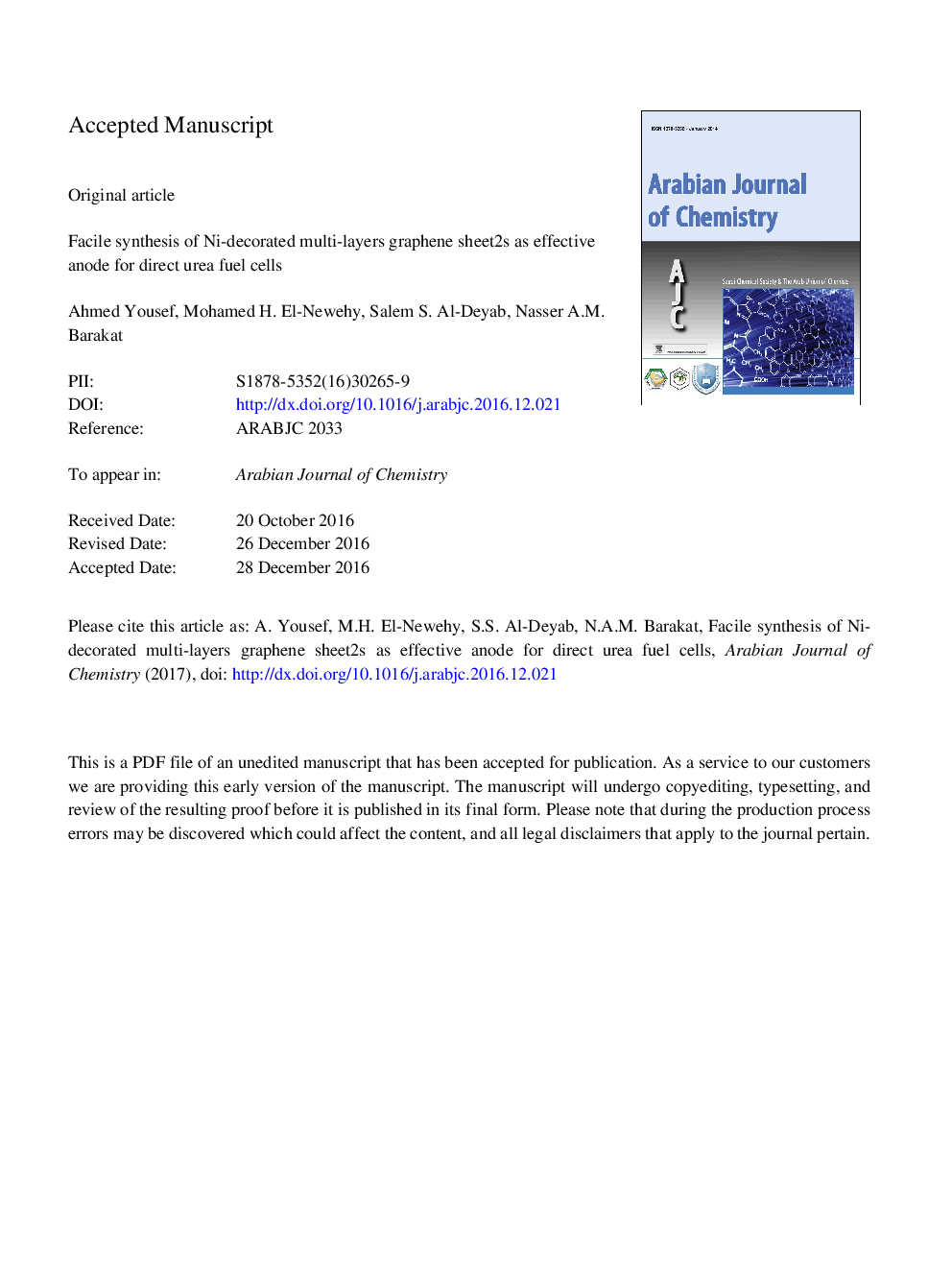| Article ID | Journal | Published Year | Pages | File Type |
|---|---|---|---|---|
| 5141998 | Arabian Journal of Chemistry | 2017 | 42 Pages |
Abstract
A large amount of urea-containing wastewater is produced as a by-product in the fertilizer industry, requiring costly and complicated treatment strategies. Considering that urea can be exploited as fuel, this wastewater can be treated and simultaneously exploited as a renewable energy source in a direct urea fuel cell. In this study, multi-layers graphene/nickel nanocomposites were prepared by a one-step green method for use as an anode in the direct urea fuel cell. Typically, commercial sugar was mixed with nickel(II) acetate tetrahydrate in distilled water and then calcined at 800 °C for 1 h. Raman spectroscopy, X-ray diffraction (XRD), scanning electron microscope (SEM), transmission electron microscope (TEM) and energy dispersive spectroscopy (EDS) were employed to characterize the final product. The results confirmed the formation of multi-layers graphene sheets decorated by nickel nanoparticles. To investigate the influence of metal nanoparticles content, samples were prepared using different amounts of the metal precursor; nickel acetate content was changed from 0 to 5 wt.%. Investigation of the electrochemical characterizations indicated that the sample prepared using the original solution with 3 wt.% nickel acetate had the best current density, 81.65 mA/cm2 in a 0.33 M urea solution (in 1 M KOH) at an applied voltage 0.9 V vs Ag/AgCl. In a passive direct urea fuel cell based on the optimal composition, the observed maximum power density was 4.06 Ã 10â3 mW/cm2 with an open circuit voltage of 0.197 V at room temperature in an actual electric circuit. Overall, this study introduces a cheap and beneficial methodology to prepare effective anode materials for direct urea fuel cells.
Related Topics
Physical Sciences and Engineering
Chemistry
Chemistry (General)
Authors
Ahmed Yousef, Mohamed H. El-Newehy, Salem S. Al-Deyab, Nasser A.M. Barakat,
